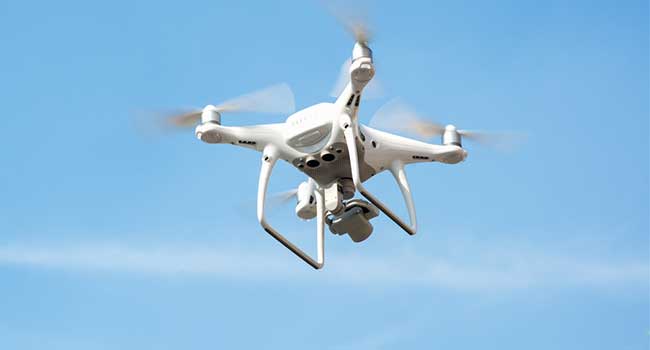
Protect Against the Drone
- By Logan Harris
- Feb 16, 2017
Mass-market drones have exploded in popularity over the last few years, with smaller price tags allowing thousands of hobbyists to purchase their own. From casual flyers to news organizations, the rising number of drones (UAVs) flying overhead brings serious security concerns with it. Drones have infiltrated the White House grounds and the home of the Japanese Prime Minister, interfered with life flights en route to hospitals, and brought fire-fighting efforts to a grinding halt. More seriously, the Islamic State has used at least 25 UAVs as flying IEDs to drop dangerous payloads in the last two months alone, injuring more than 50 people.
Because of the disruption and potentially disastrous consequences posed by drone use of this type there has been a recent upsurge in technological development that can be used to mitigate done threats. The most crucial first step in countering the threat of UAVs is detection. There are four main tools currently in use to detect drones: video, acoustic sensors, radio, and radar.
The newest of these technologies, compact surveillance radar (CSR), differs from other security systems in its ability to detect and track foreign objects in all weather conditions, and monitor a wide coverage area. Weighing less than 5 pounds, and costing no more than a traditional thermal PTZ camera makes it possible to be mounted on practically any existing infrastructure. New algorithms are even making it possible for CSR to automatically filter out birds, reducing the number of false alarms.
In the United States, the FCC has ruled that jamming or GPS spoofing to defend against drones is illegal. Without this capability, the security response is limited to finding and detaining the operator. This doesn’t always help to stop the damage that drones can cause. In some cases, even with early warning, drones can get close enough to their targets to drop a payload and crash into a structure before the operator can be found. Even drones operated without malicious intent can cause problems. Recently, a UAV crashed into the Space Needle, because of operator error or potentially an automated return-to-home feature.
The threat posed by drones to infrastructure and public gathering spaces calls for updated security solutions. While there are real concerns about allowing jammers to be used with impunity, many industry groups have admonished the US government to put into practice no-fly zones over electrical facilities, refineries, transmission lines, substations, and airports, among others. At the present time, it is illegal in most cases for even state or local governments to stop or interfere with drones other than to locate the operator and have them land the drone. More must be done in the future to ensure the safety of everyone.
About the Author
Logan Harris is the CEO of SpotterRF.